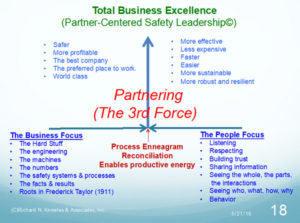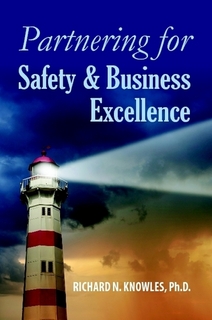We are coming to the end of another decade of change, turmoil and uncertainty.
 Artificial intelligence and robots, block chains and bitcoins, the opioid epidemic, political strife, and workplace violence, international worries and potential conflicts are some of the challenges facing all of us. There is a critical need for people, in all walks of life, to come together to openly and honestly talk about our challenges, share our thinking and learn together. We do not have to be blindly swept along. We can make decisions and do the things that we need to do to help to make the world a better place.
Artificial intelligence and robots, block chains and bitcoins, the opioid epidemic, political strife, and workplace violence, international worries and potential conflicts are some of the challenges facing all of us. There is a critical need for people, in all walks of life, to come together to openly and honestly talk about our challenges, share our thinking and learn together. We do not have to be blindly swept along. We can make decisions and do the things that we need to do to help to make the world a better place.
We can make a marked difference!
One important challenge that we can do something about is in improving the safety performance in our own organizations.
For the last 4-5 years, the number of people getting killed at work has been holding steady at around 5,300-5,500 people. Lots of safety professionals and other people are working to improve safety in many ways, but we are stuck at the level of safety compliance. We have to shift our thinking in order to break out of this box and significantly cut the numbers of people getting hurt and killed.
This is not about blaming the people and seeking root cause. It is not about just working on safety. In our complex world, there is so much more going on and there is no single root cause. Organizations are complex, adapting, self-organizing networks of people so our thinking has to shift to fully grasp this complexity and do the things we need to do.
Partner-Centered Leadership
The best way to improve the organization’s safety performance, beyond compliance, is in using Partner-Centered Leadership©, which I have been developing for over 3 decades. I used this approach when I was a Plant Manager for many years and together, the people cut our injury rate by 97%, our emissions dropped by 95% and earning rose by 300%. I further developed this approach in my consulting work over the last two decades. Everywhere this approach is used has resulted in rapid, significant improvements in the organization’s total performance.
In building on the base of safety compliance, the focus of our work is on developing more effective leadership and improving the total performance of the organization. Safety performance is just one aspect of the organization’s performance so when the entire organization improves, safety improves as well.
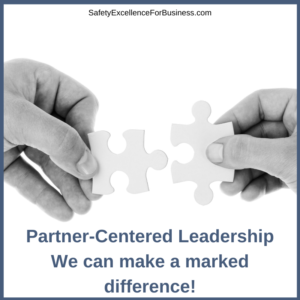 When I talk about safety. my thinking goes well beyond the traditional safety numbers, training and procedures. It includes ideas about respect and how everyone has agreed to work together. It includes ideas about personal responsibility, integrity and dedication to helping everyone improve. It includes openness, honesty and sharing information abundantly. It includes ideas about the deeper, often hidden patterns of behavior which have a profound impact on the work environment and drive much of the behavior. It includes the fact that the managers and leaders have the largest impact on their organization’s performance. It includes the understanding that managers focus on reliability, stability, predictability and control as they try to maintain the status quo and that leaders focus on the people, change and the future sharing information abundantly, treating people with respect and helping people find meaning in their work. Both good leaders and managers are needed.
When I talk about safety. my thinking goes well beyond the traditional safety numbers, training and procedures. It includes ideas about respect and how everyone has agreed to work together. It includes ideas about personal responsibility, integrity and dedication to helping everyone improve. It includes openness, honesty and sharing information abundantly. It includes ideas about the deeper, often hidden patterns of behavior which have a profound impact on the work environment and drive much of the behavior. It includes the fact that the managers and leaders have the largest impact on their organization’s performance. It includes the understanding that managers focus on reliability, stability, predictability and control as they try to maintain the status quo and that leaders focus on the people, change and the future sharing information abundantly, treating people with respect and helping people find meaning in their work. Both good leaders and managers are needed.
It includes spending a significant amount of time in the workplace with the people holding both casual and formal conversations about how the people are doing, asking them how I can help to improve their job, looking for feedback on my own performance, seeking better ways to do things as well as talking about the things that are important for the business to succeed and prosper. It also includes the need to maintain high standards and operating discipline. I spent five hours a day in the plant when I was the Plant Manager, every day for 5 years.
Keeping the Continuous Conversation Going is Key
These conversations are a very important part of building the metaphorical container that holds the organization together and provides guidance for everyone. Sometimes these conversations can get quite intense as we all are searching for the truth and better ways to do things. When people have a good understanding, the vision, the mission, the expectations, the standards of behavior and performance, and their own role in building the success of the whole organization, they have a sense of this container, and they are able to make the decisions they need to make regarding the details about how they can best improve their own work as well as the business. The container, which I call the BOWL, provides the order and focus for the organization and the freedom for the people within the BOWL to learn, grow and improve.
Improvement and change come one conversation at a time. As we talk together, listen and learn, everyone gains new insights and a better understanding of how things are going. As this thinking swirls around the ideas begin to synthesize into concrete pictures and new possibilities emerge. The people co-create their shared future. Everyone is growing and learning together.
Partner-Centered Leadership is the best approach that I know about that is proven to help us break out of compliance and move into much better levels of total organizational performance. Call me to learn more about this way of working and the central tool we use which is the Process Enneagram©. If you really want to make a difference then call us at 716-622-6467.
(We are on the cusp of a New Year, so as you draw up your strategies for improvement in 2020, know that the old way of doing things won’t get you to where you want to be…Give us a call…We’ll get you moving forward to better safety performance.)
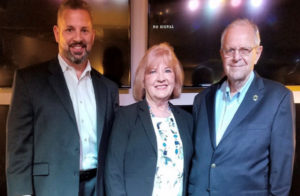 This begins with the leaders deciding to create a culture where it is okay and encouraged that people genuinely talk together, listen, help each other, look out for each other and learn together. This is a culture that helps people to be the best they can be and for the organization to get a lot more profitable. It all begins with all of us treating each other with respect.
This begins with the leaders deciding to create a culture where it is okay and encouraged that people genuinely talk together, listen, help each other, look out for each other and learn together. This is a culture that helps people to be the best they can be and for the organization to get a lot more profitable. It all begins with all of us treating each other with respect.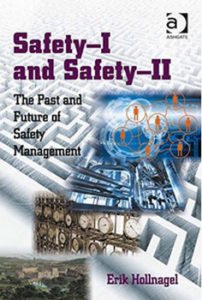 This is the sort of culture that Eric Hollnagel is talking about in his Safety II work, which is intended to move the organization beyond the traditional top-down safety management. (I’ve written about Safety II in previous articles – it is all good!)
This is the sort of culture that Eric Hollnagel is talking about in his Safety II work, which is intended to move the organization beyond the traditional top-down safety management. (I’ve written about Safety II in previous articles – it is all good!)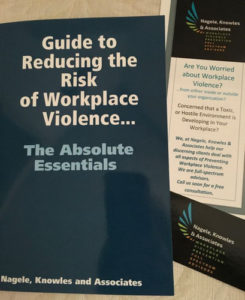
 In our November Safety Newsletter, I wrote about Partner-Centered Leadership. This is the most effective way to improve safety performance. This way of leading also results in improvements in most other aspects of the business as trust and interdependence are built and the environment is safe for the open flow of information. A key aspect of this is working with the people.
In our November Safety Newsletter, I wrote about Partner-Centered Leadership. This is the most effective way to improve safety performance. This way of leading also results in improvements in most other aspects of the business as trust and interdependence are built and the environment is safe for the open flow of information. A key aspect of this is working with the people.